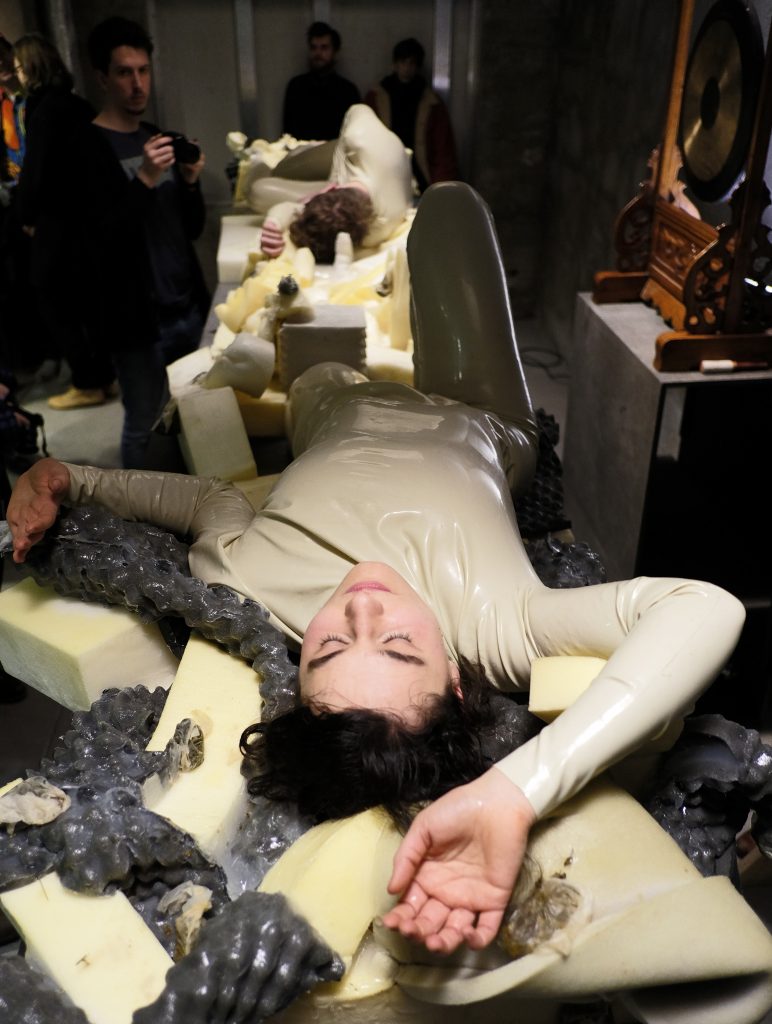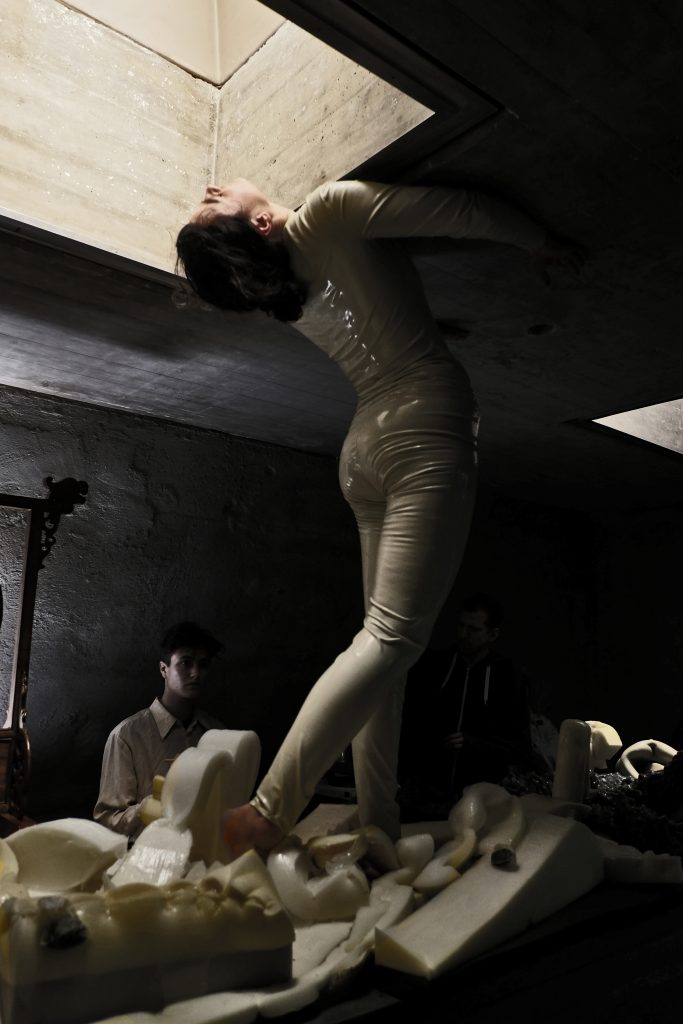






A landscape made of foam impregnated with latex is mounted on a concrete table. Colors: sand, shades of gray, anthracite, concrete.
Tea is brewed in a white kettle. The whistling of the kettle is integrated into a minimalist soundscape, further sounds are produced by a singing bowl and a gong. Two people in sand-colored latex two-pieces fit into the structure, move within the landscape and examine it with curiosity. The installation is altered by pinned tea bags. Visitors are free to influence the foam landscape by integrating their used tea bags. Tea bags change the color, setting focal points in the inorganic structure. The color imprint of the tea bags remains in the foam landscape.
“Transformation of spatial identity”
Two performers emerge, grow and merge into an architecture. They become spatial, the space becomes them. Spatial identity can be an event of experienced insertion into a space that has a self and is one’s own self. How does the self enter the space? Mutuality is adopted in symbolic interactions. Identification processes become spatial through localization, use of space, spatial design and overcoming space. When is space a free space, a space for an individual? Leave traces, cells and organic matter in the material environment. Likewise, take so much of it that the space is human enough. One speaks of “space and rites of society”. Does society make space or has space divided society in the way that the division of space has determined? Here we are looking for the spatial reference of individual action, the “spatial correlate”, a space as an integral part of ego identity.
People can influence the identity of their surroundings. If they leave behind a part of their identity, this shapes their surroundings and in turn changes their identity. The influence of the “new” space has a new effect on people.
Every architecture has an identity. Even existing architecture is changeable. And: shouldn’t architecture be transformed in order to do justice to people? The abstract embodiment of architecture in the form of art offers opportunities to discover new perspectives, concepts and identities. Art experiments with the social expression of people.
In the context of interactive performance, the participating visitor can work to create a “new” space and a “new” more “shared/mixed” identity through their symbolic external interaction.
Performance with Charlie Kaldenhoff, Julian Quentin and Christi Knak Tschaikowskaja
Concept: Christi Knak Tschaikowskaja
Presentation and lecture: Moses Pöhls
Photography: Caspar Lukas Wölfl